The Spanish Silver Dollar. Holed. Cut. And Stamped.

The Spanish Silver Dollar. The coin that ruled the world.
Beginning with Columbus in 1492 and continuing for nearly 350 years, Spain conquered and settled most of South America, the Caribbean, and the south west of America. It was however, the silver rich continent of South America that became Spain’s treasure trove, bank rolling its ascendancy as a world power.
In 1536, Spain established its first colonial mint in Mexico. It was by far the most lucrative of the Spanish mints, coining more than 2 billion dollars’ worth of silver pieces over a 300 year period (1536 – 1821). The Lima and Potosi Mint came on board in 1568 and 1573 respectively.
Not only were the Spanish mint’s prolific but the monarchy in 1537 introduced exacting standards of weight and purity into its coinage.
The Spanish Silver Dollar enjoyed worldwide dominance and was ultimately accepted as an international currency and medium of exchange.
When cut into quarters, half or three-quarter segments and stamped with the insignia of a colony, the Spanish Silver Dollar served as small change for that dependency. Such practises were widely used throughout the British colonies of the Caribbean and several African nation’s including Sierra Leone.
It was the coins that was defaced by Governor Lachlan Macquarie to create his Holey Dollar and Dump, the very first coins struck in Australia.
Even Great Britain succumbed to the lures of the Spanish Silver Dollar. In 1797 the Bank of England purchased for its own account well over two million dollars of Spanish Silver Dollars to supplement its own coinage. These were counter stamped with an oval bust of King George III.
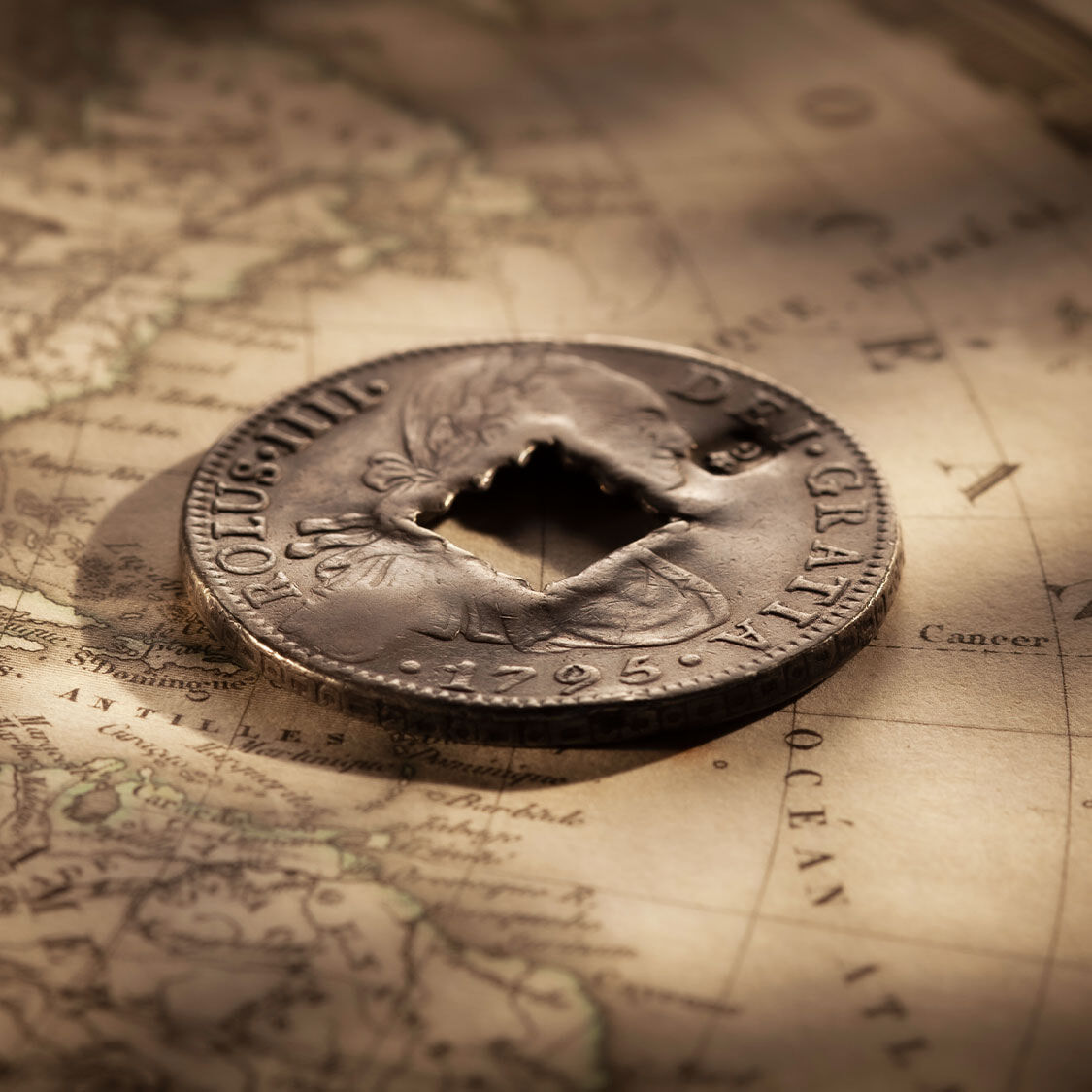
Issued by the Colony of Guadelope.
1811 Holey Dollar created from a Charles IV Spanish Silver Dollar that was struck at the Mexico Mint in 1795. Pierced by a square hole edged with 16 notches and counter stamped on both obverse and reverse 'G' with a Crown.
Very Fine and rare.
Price: $8000
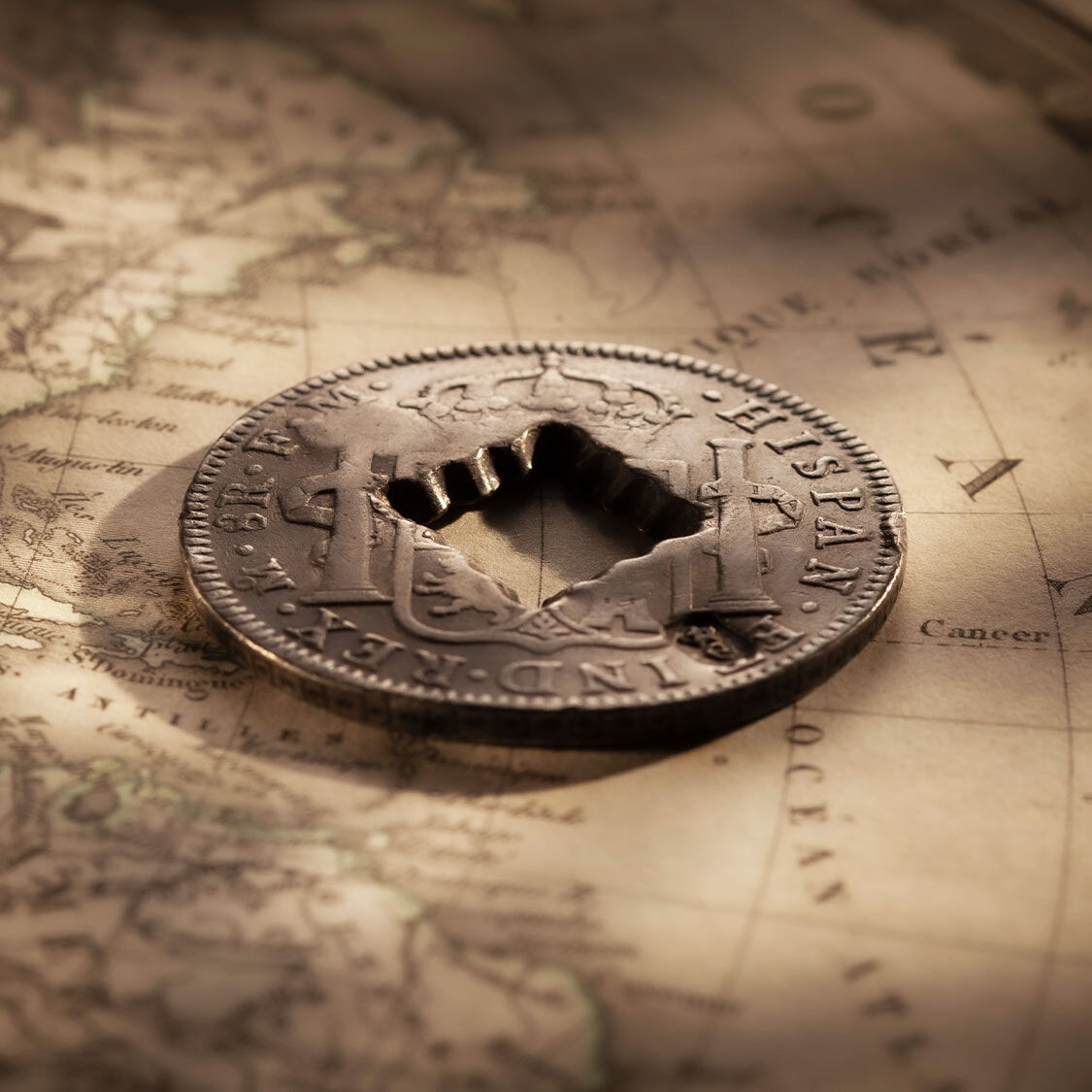
Guadelope is an island group in the southern Caribbean Sea. In 1759 Guadelope was occupied by the British for four years but restored to France in 1763.
Further rule of the Island teetered between Britain and France over the ensuing years, but was finally restored to France in 1816.
Issued by the British Colony of Dominica.
1813 Circular segment cut from a Spanish Silver Dollar and counter stamped with a Crown and a '6' for the value of 6 bitts in a vertical rectangle.
Note the outline of the portrait of the Spanish King on the cut segment.
Coin Fine / Counter stamps Very Fine and very scarce
Price $1500
Dominica is part of the Windward Islands group situated in the Caribbean Sea.
Rule of Dominica teetered between France and Britain with the latter finally establishing a small colony in 1805.

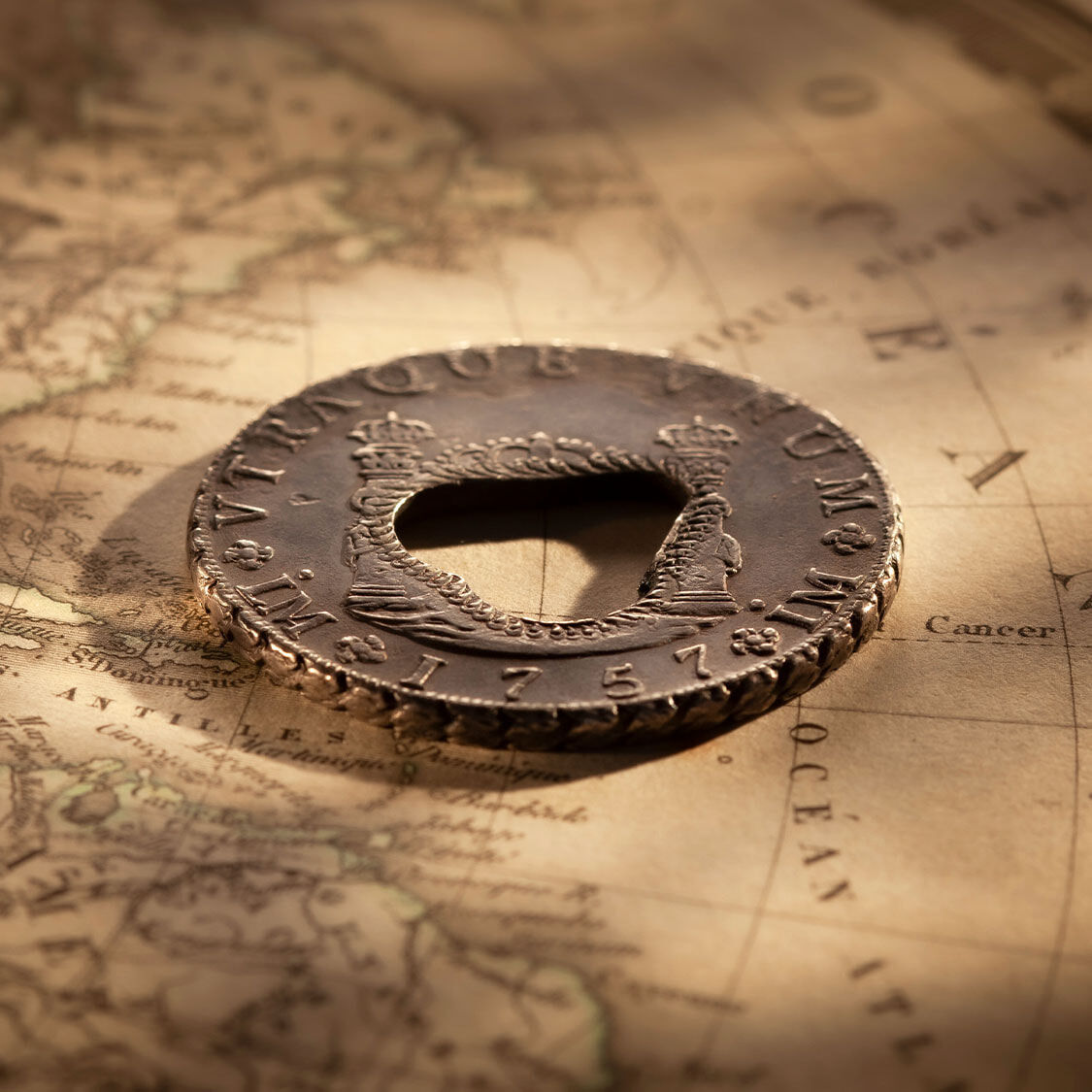
Issued by the Colony of Martinique.
Holey Dollar created from a Spanish Pillar Silver Dollar that was struck at the Lima Mint in 1757.
Pierced by a triangular heart shaped hole and over stamped around the cut edge.
Good Very Fine and extremely rare.
Price: $9000

Martinique is a Caribbean Island and in the early 1600 and 1700s, served as a home port for French pirates.
Britain controlled the island for most of the time from 1794 to 1815 (with the exception of the period 1802 to 1809) when it was traded back to France at the conclusion of the Napoleonic Wars.
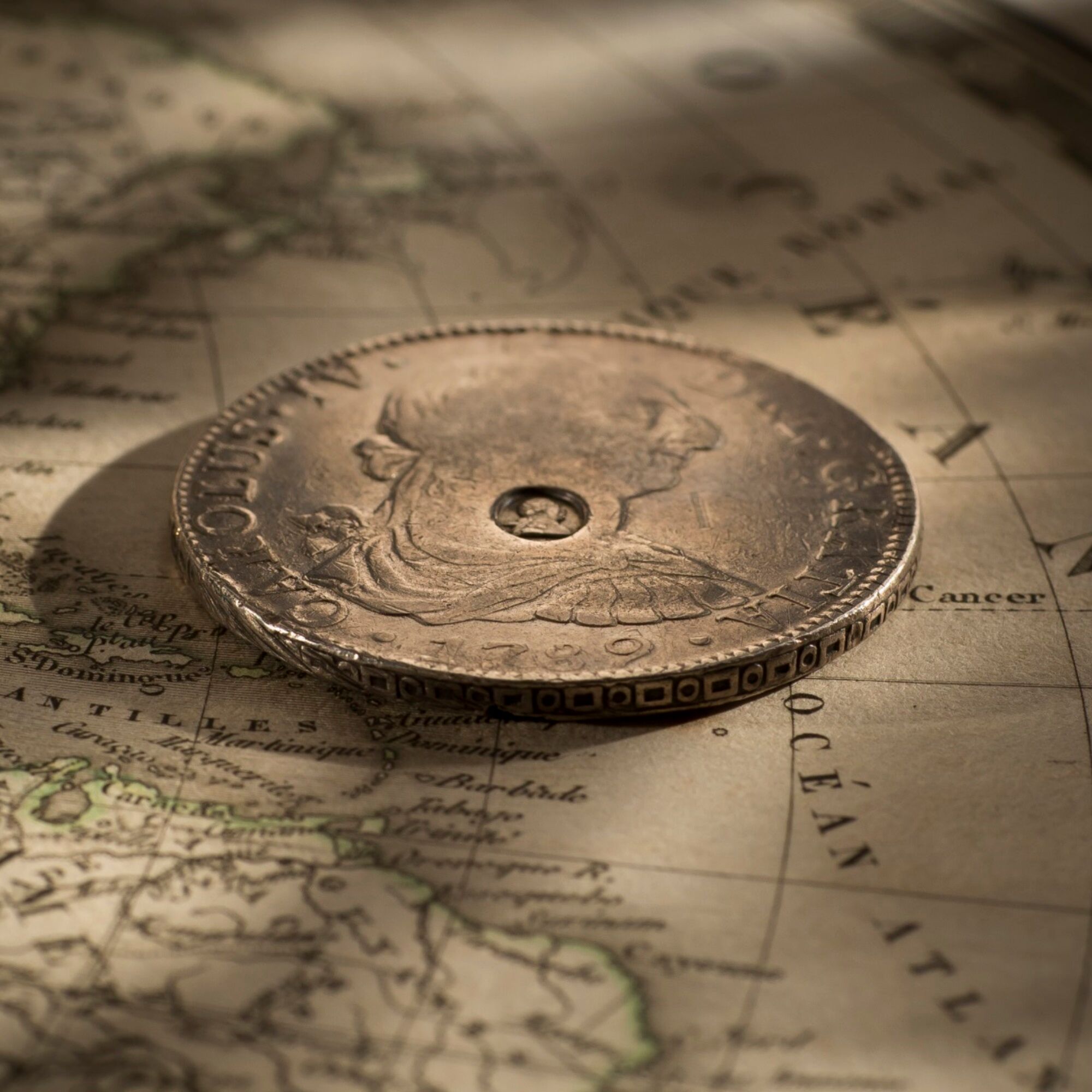
1789 Mexico Mint Spanish Silver Dollar counter stamped with the bust of George III in 1797.
Very Fine
Price $1,500
This 1789 Mexico Mint Silver Dollar was counter stamped in 1797 with the bust of King George III.
The keen collector will note that this 1789 Silver Dollar has the legend of Carolus IV but the portrait of King Charles III, who died two years earlier in 1788.
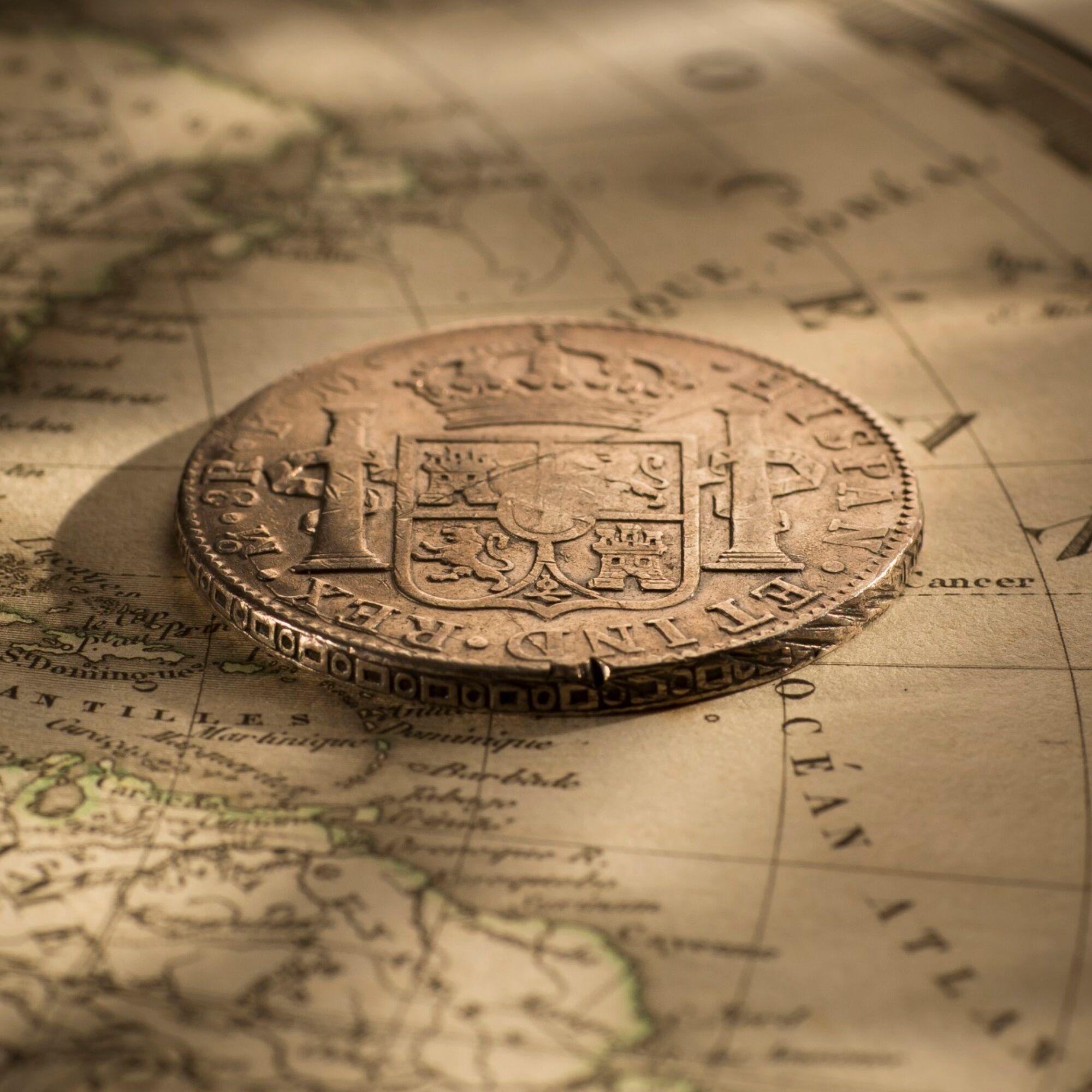
It was minted during a period of transition at the Mexico Mint when the portrait of the new King had not been received. Eager to maintain production of silver coins to flow into Spanish coffers, a Royal decree granted the colonial mints the right to continue striking coins with the portrait of the deceased King Charles III. The legend was however amended to acknowledge the new monarch Charles IIII.
Transitional Silver Dollars are in their own right supremely rare.
© Copyright: Coinworks